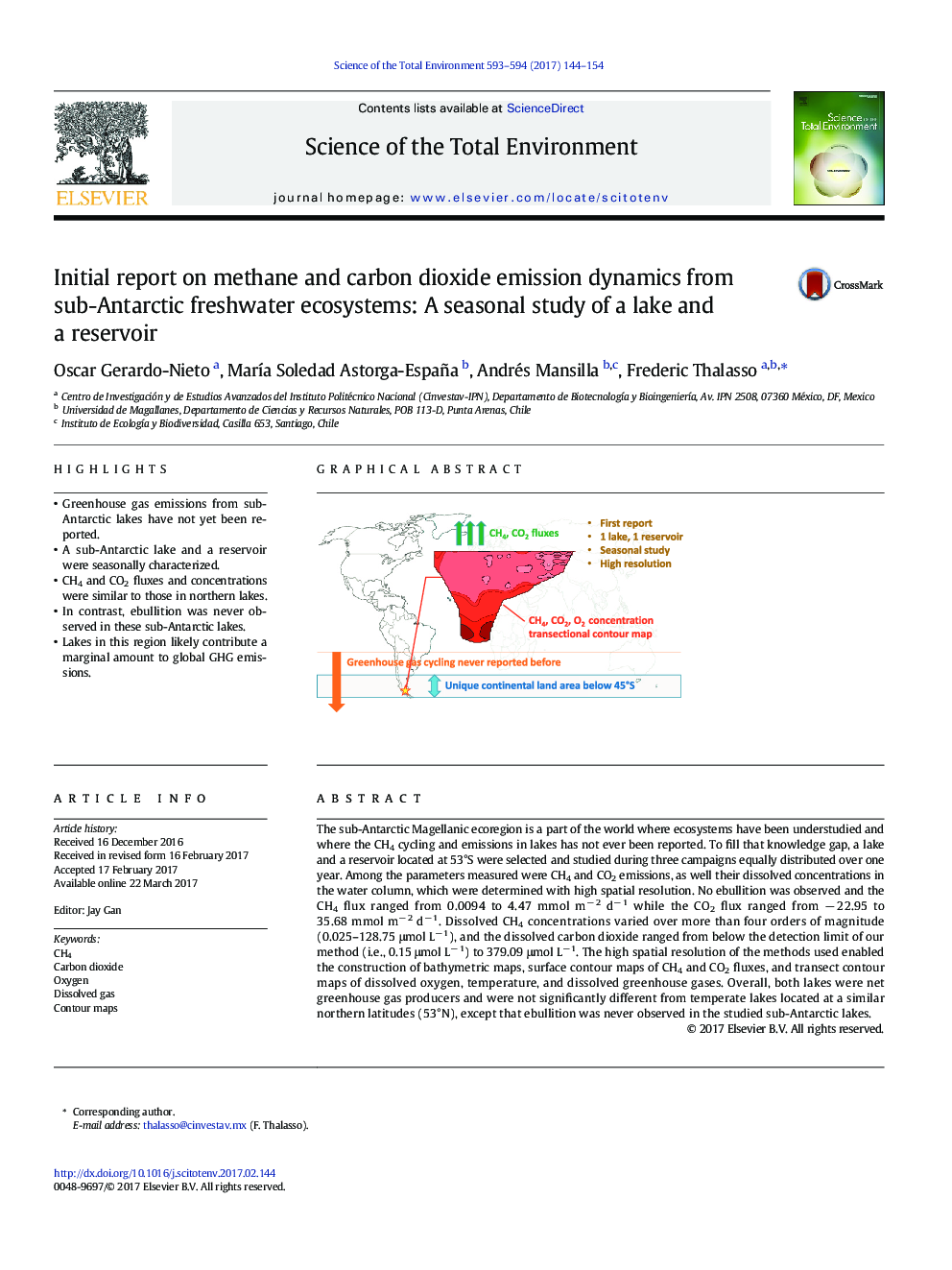| Article ID | Journal | Published Year | Pages | File Type |
|---|---|---|---|---|
| 5750842 | Science of The Total Environment | 2017 | 11 Pages |
â¢Greenhouse gas emissions from sub-Antarctic lakes have not yet been reported.â¢A sub-Antarctic lake and a reservoir were seasonally characterized.â¢CH4 and CO2 fluxes and concentrations were similar to those in northern lakes.â¢In contrast, ebullition was never observed in these sub-Antarctic lakes.â¢Lakes in this region likely contribute a marginal amount to global GHG emissions.
The sub-Antarctic Magellanic ecoregion is a part of the world where ecosystems have been understudied and where the CH4 cycling and emissions in lakes has not ever been reported. To fill that knowledge gap, a lake and a reservoir located at 53°S were selected and studied during three campaigns equally distributed over one year. Among the parameters measured were CH4 and CO2 emissions, as well their dissolved concentrations in the water column, which were determined with high spatial resolution. No ebullition was observed and the CH4 flux ranged from 0.0094 to 4.47 mmol mâ 2 dâ 1 while the CO2 flux ranged from â 22.95 to 35.68 mmol mâ 2 dâ 1. Dissolved CH4 concentrations varied over more than four orders of magnitude (0.025-128.75 μmol Lâ 1), and the dissolved carbon dioxide ranged from below the detection limit of our method (i.e., 0.15 μmol Lâ 1) to 379.09 μmol Lâ 1. The high spatial resolution of the methods used enabled the construction of bathymetric maps, surface contour maps of CH4 and CO2 fluxes, and transect contour maps of dissolved oxygen, temperature, and dissolved greenhouse gases. Overall, both lakes were net greenhouse gas producers and were not significantly different from temperate lakes located at a similar northern latitudes (53°N), except that ebullition was never observed in the studied sub-Antarctic lakes.
Graphical abstractDownload high-res image (287KB)Download full-size image
